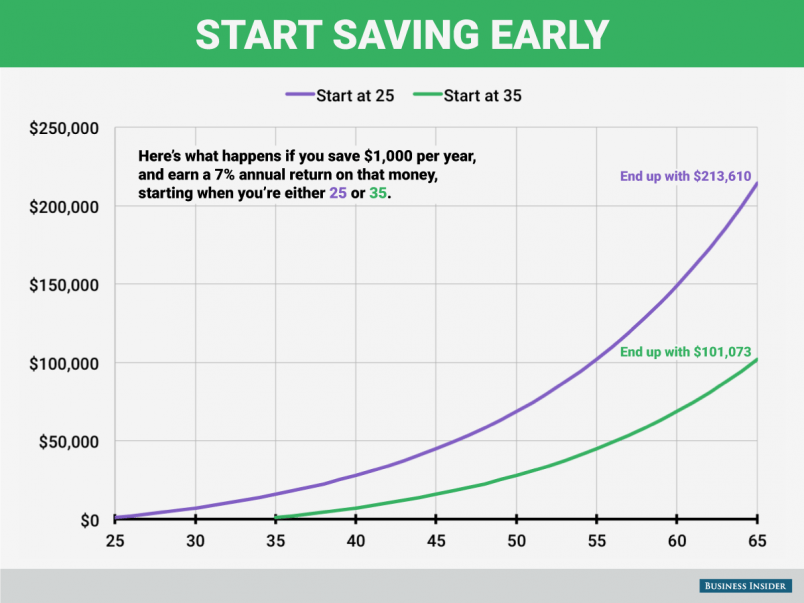Welcome to reThinkable - my weekly newsletter where I share actionable insights to build a wealthier and healthier life.
I'm currently in New Orleans with one mission: to eat everything I see. If I don't end the day feeling overly stuffed and nauseous, I failed. Wish me luck!

P.S. If you have restaurant recommendations in New Orleans, reply to this email and let me know. Please and thank you!
Here’s what we’re covering today:
💰The reality of saving money
🚩 And… it might not be your fault
🏦 How to save more, according to science
Estimated read time: 4 minutes and 12 seconds
💰The reality of saving money
It's tough to find common ground in 2023, but one thing we can all agree on is saving a little extra cash would do us good. Having a good amount of money saved is the difference between:
Grudgingly staying at a job you hate vs comfortably quitting to find one you love
Working for the rest of your life vs retiring early
Buying a house vs renting for the rest of your life
The problem is, most people are terrible at saving money…
57% of US adults are uncomfortable with the amount of emergency savings they have
22% of US adults have no emergency savings at all
30% of US adults have enough savings to cover 6 months of expenses
Most people know they should save more but the reality is, it’s pretty tough to do... But there is a way to make it a lot easier, according to science.
But first, I want to show you the potential behind saving earlier and often - this is the difference in wealth accumulation for an individual who started saving at 25 vs 35 years old.

🚩 And… if might not be your fault
If you’re bad at saving, I have good and bad news.
The good news is, it’s not entirely your fault.
The bad news is, after you know who or what is at fault, and you still do nothing to change, then it’s gonna be your fault.

There are internal and external reasons why humans are naturally bad at saving.
At the internal level, it’s just how our brains are wired. We all have cognitive biases that impact how we perceive the world which impacts our finances. For example, we all have natural tendencies to:
prefer immediate rewards over larger future rewards (Present Bias)
avoid losses even if we know there is a bigger long-term gain (Loss Aversion)
At the external level, multi-billion dollar brands constantly bombard us with marketing and advertising campaigns to make us crave the latest and greatest. And it doesn’t help that we feel the societal pressure to impress others aka “keeping up with the Joneses.”
But despite these internal and external pressures, there is a science-backed way to help you easily save more.
🏦 How to save more, according to science
In 2017, Professor James Choi from Yale University ran a research study to identify cues that would trigger employees to save more money in their 401(k) retirement and savings plan.
Employees received a brief email message with 1 of 3 cues:
Anchor Cues: Include small pieces of information or reference points
Example of a 3% anchor cue: ”You could increase your contribution by 3% or more, and receive more of the matching contribution you’re eligible for.”Saving Threshold Cues: Remind employees the amount they need to save to receive a matching contribution from their employer
Example: “If you save an additional $10,000 by December, you’ll receive a 100% matching contribution”
Goal Setting Cues: Suggests specific saving goals
Example: “If you set a goal to save $11,000 for the year, and you attain it, you’ll get $2,500 more in matching contribution than you’re currently on pace for.”
This research led to 2 conclusions:
The best trigger was the Goal Setting Cue
People saved more when the results were more difficult to achieve. For example, people saved more when the saving goal was $11,000 than when it was $7,000.
Here’s how to apply these learnings to help you save more:
First, set a specific, but reasonable, amount to save. For example:
I want to save $500 a month from my paycheck or
I want to save 5% of my monthly earnings
Then, immediately make the saving amount slightly higher:
Instead of saving $500 a month, save $800
Instead of saving 5%, save 9%
The goal is to make it more difficult for you so you can save more. Chances are, even if you can’t save the whole $800 by the end of the month, if you set your mind to save $800, you’ll end up saving more than $500.
“Shoot for the moon. Even if you miss, you'll land among the stars.”
Second, create Goal Setting Cues to remind you to save when you get paid, for example:
Use automated emails
Set calendar reminders
Set automated text message alerts
But if you have a consistent paycheck, you can skip the 2nd step and just set up automatic transfers from your checking account into your savings account.
But here’s the truth: just reading and learning about this will get you nowhere - you have to take action. The best time to plant a tree was 20 years ago. The second best time is now.
🔎 Think More
😮 Dave Portnoy sold his company for $500 million and bought it back for $0. But… theres a catch.
👮 Wealthy people are working with criminal groups and risking jail time to keep their money safe.
💵 This is the minimum salary you need in your US state.
📝 reThinkable Quiz 📝
Which is the best saving cue?
👨💻 We read your emails and poll relies daily
Hit reply and let us know what you want more of!